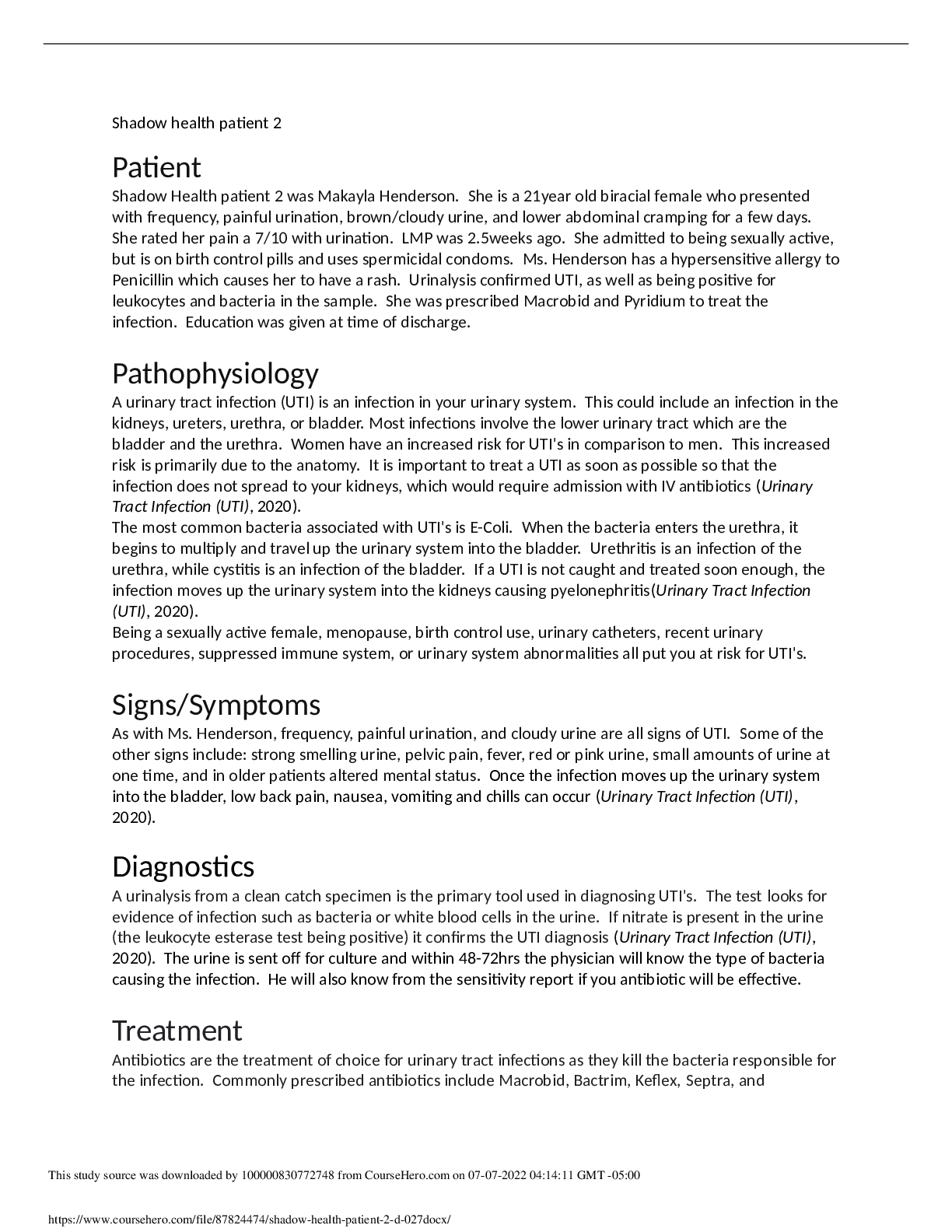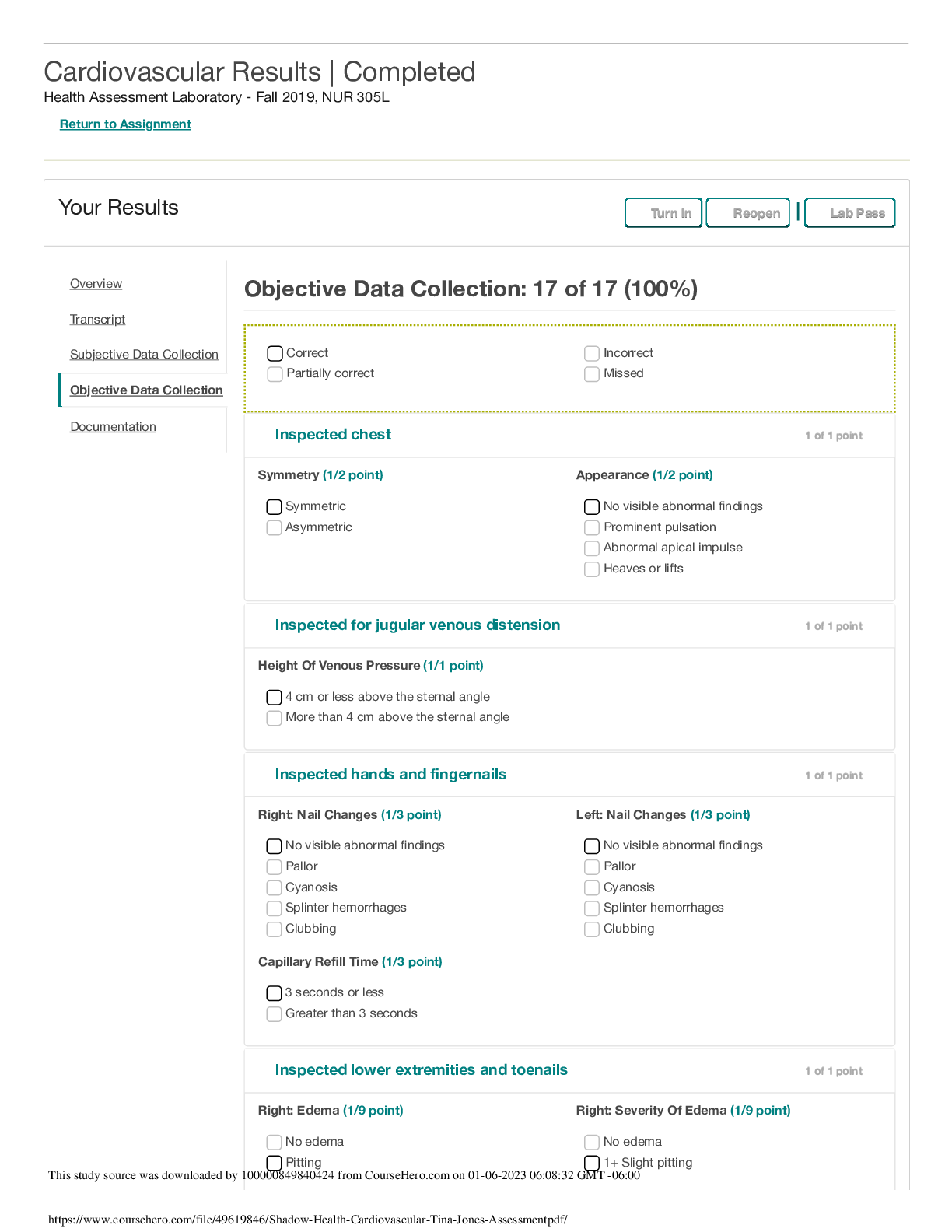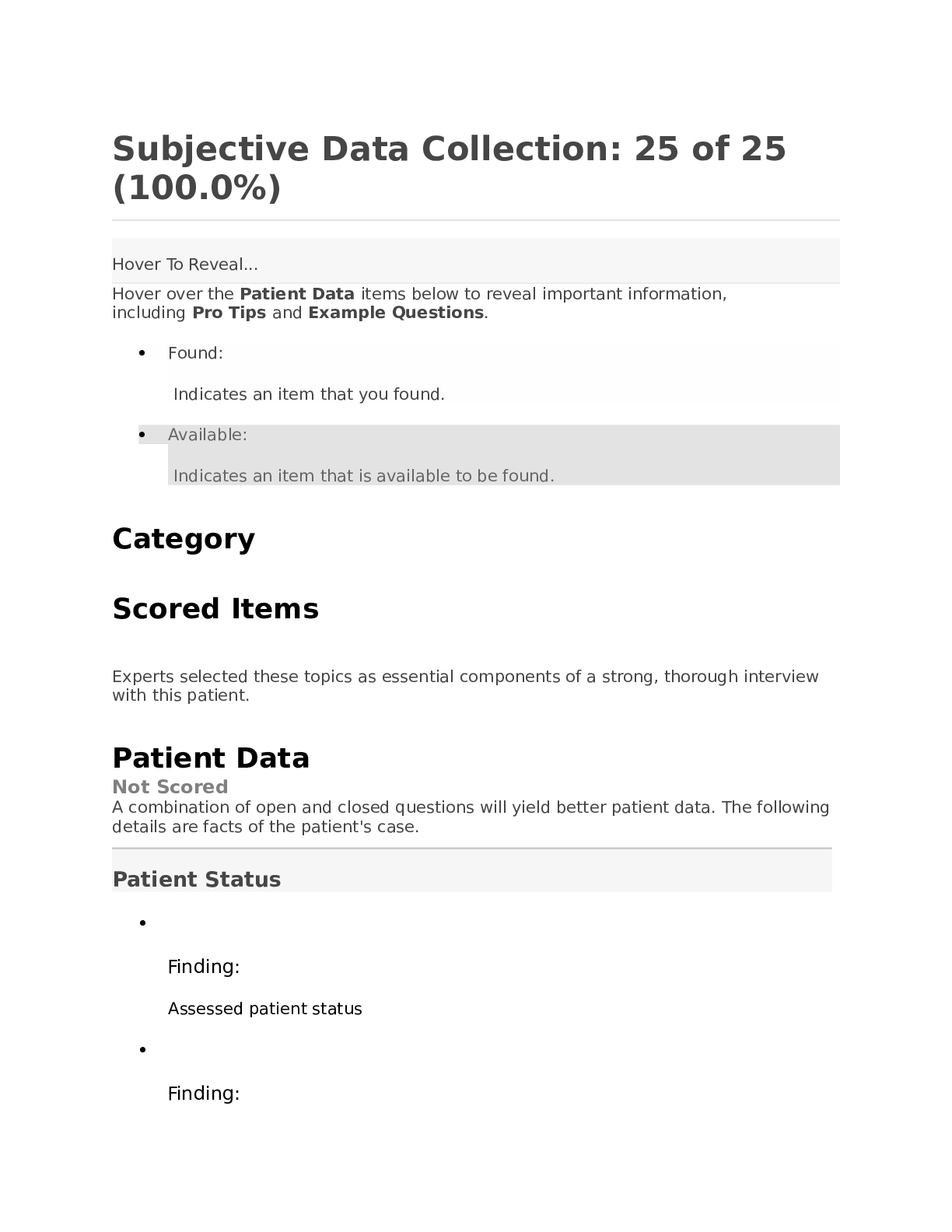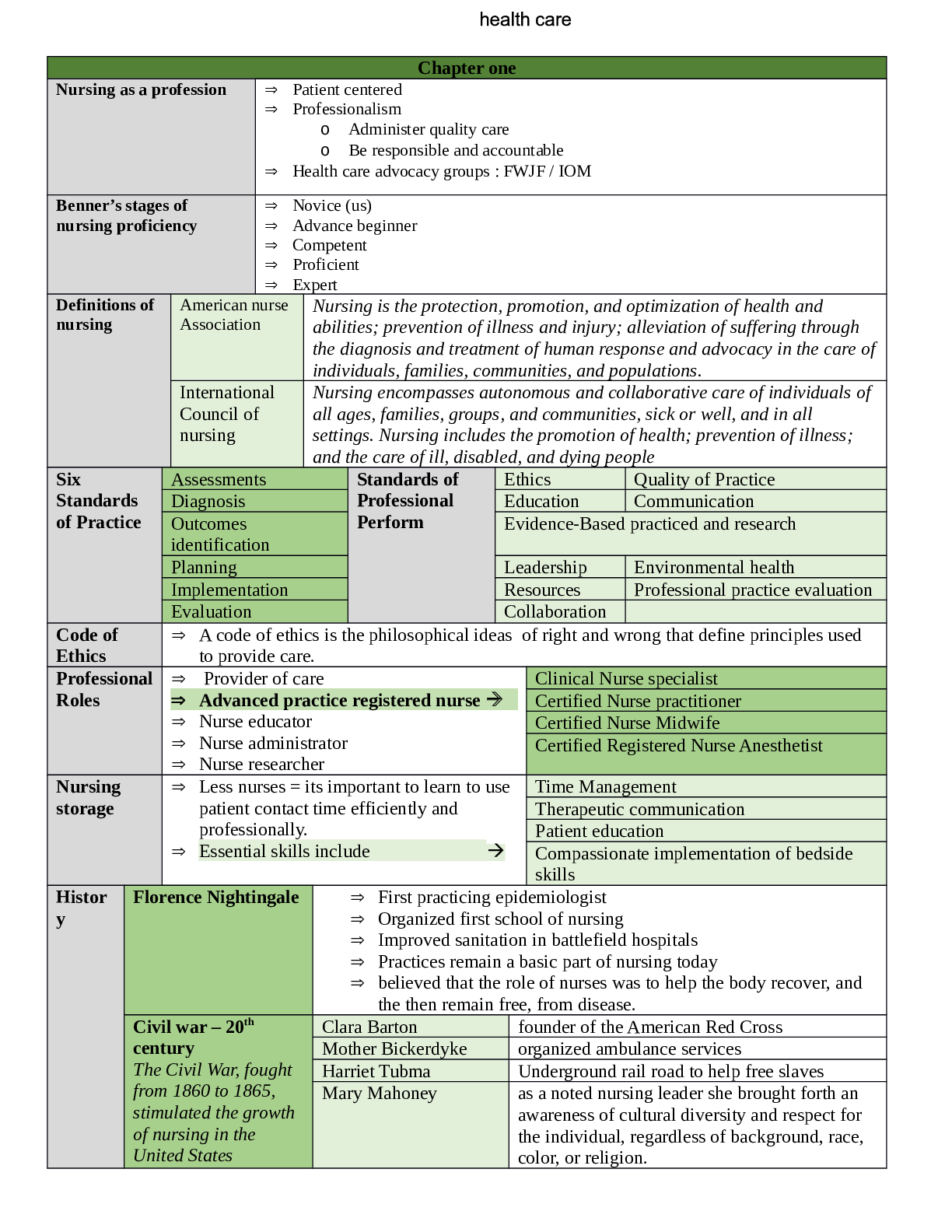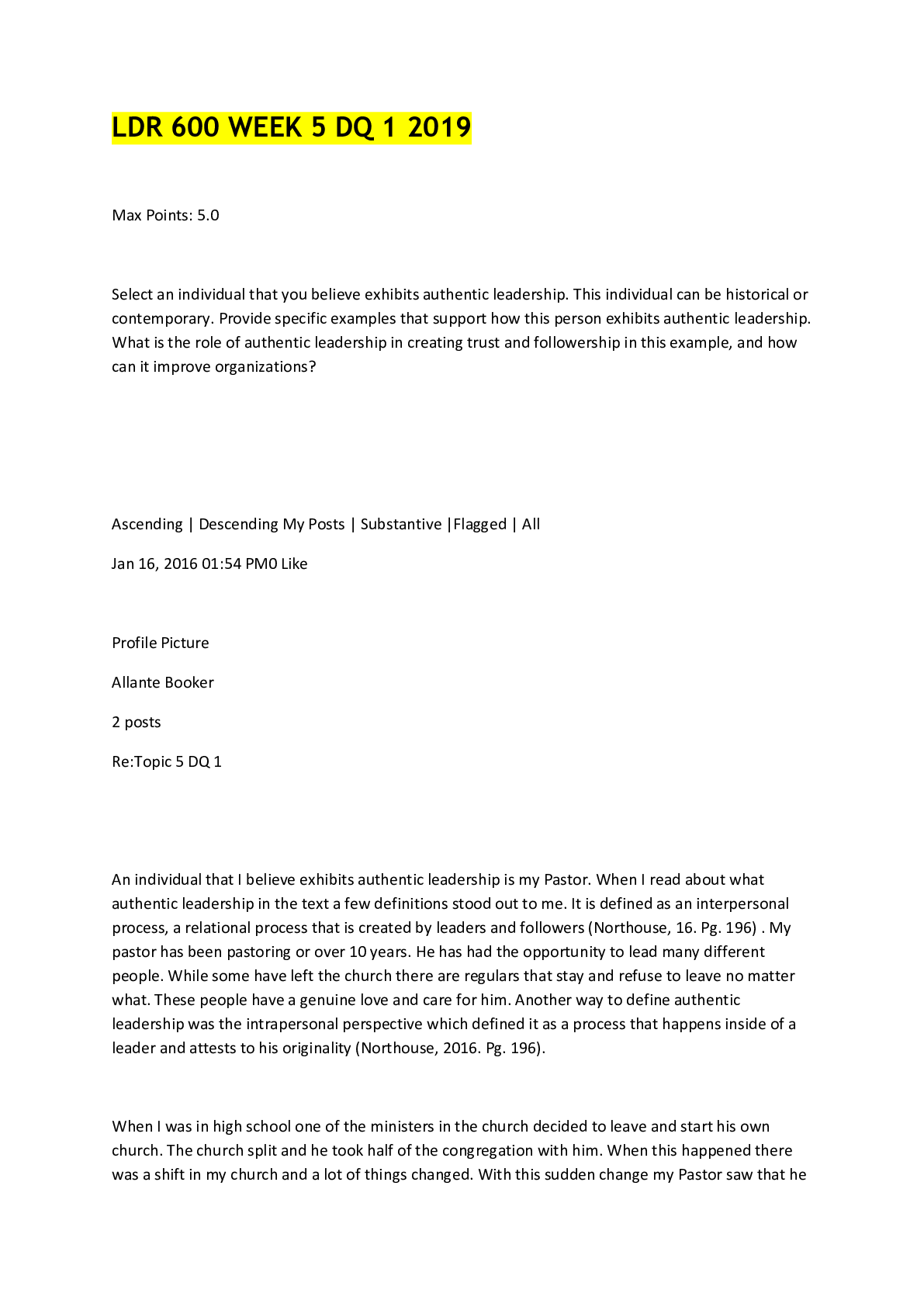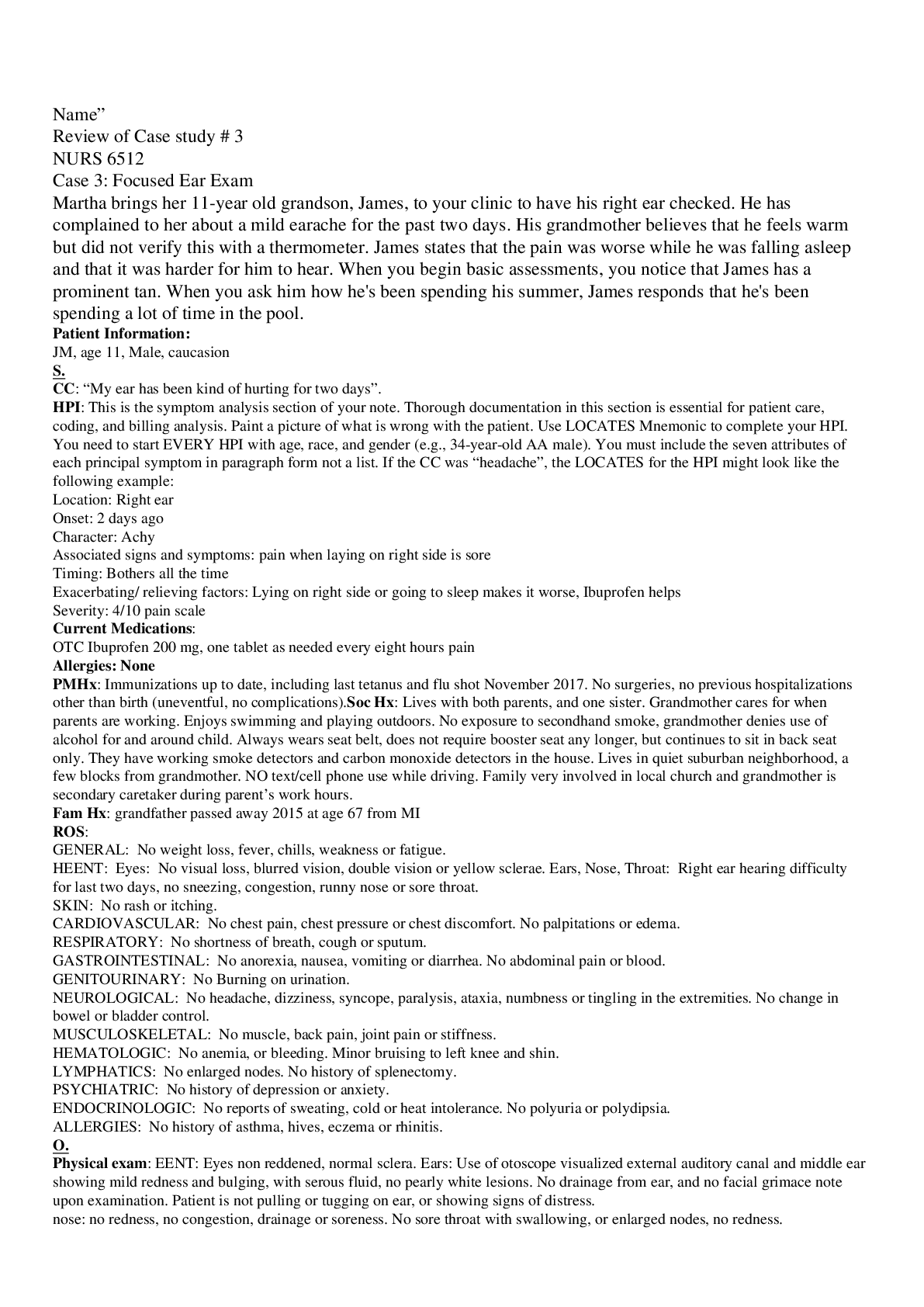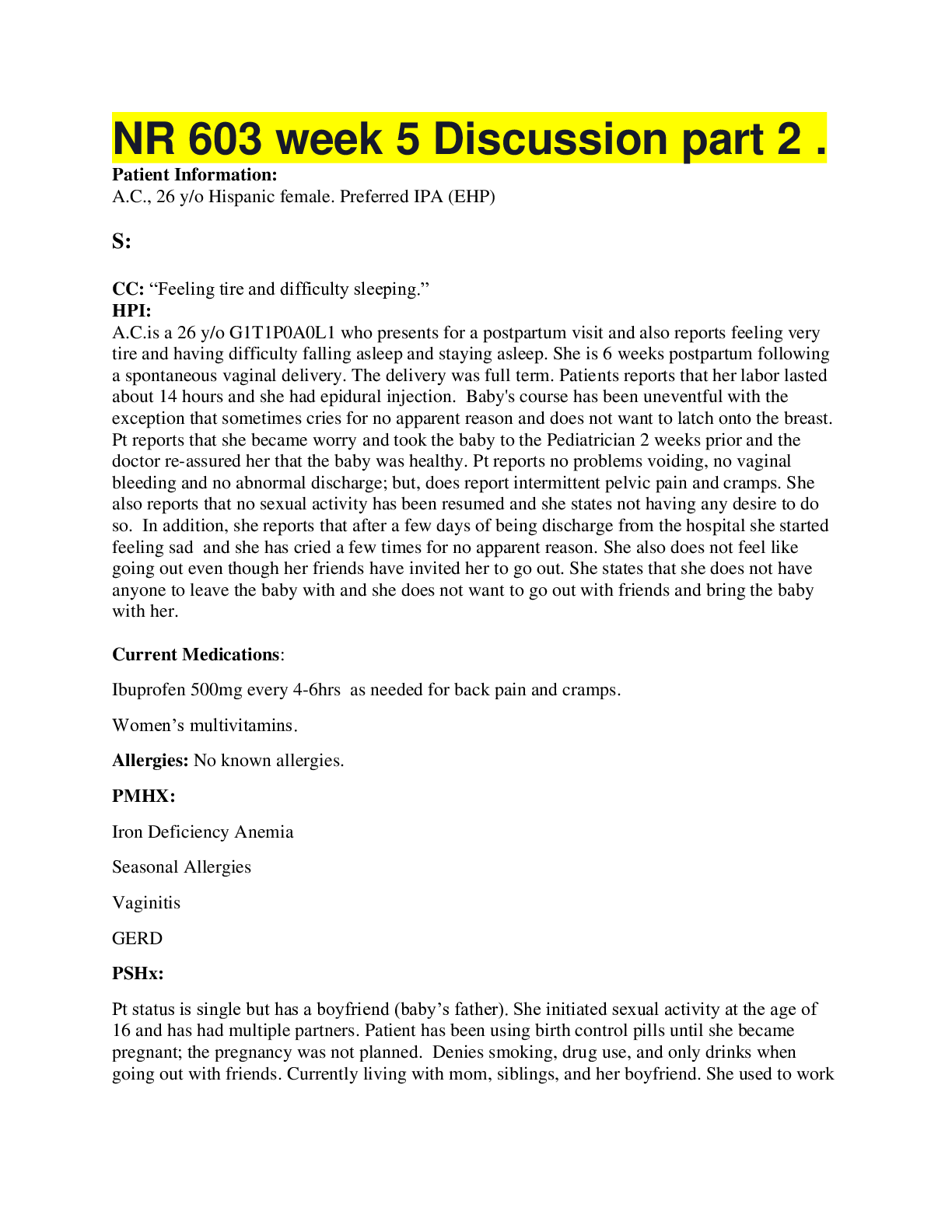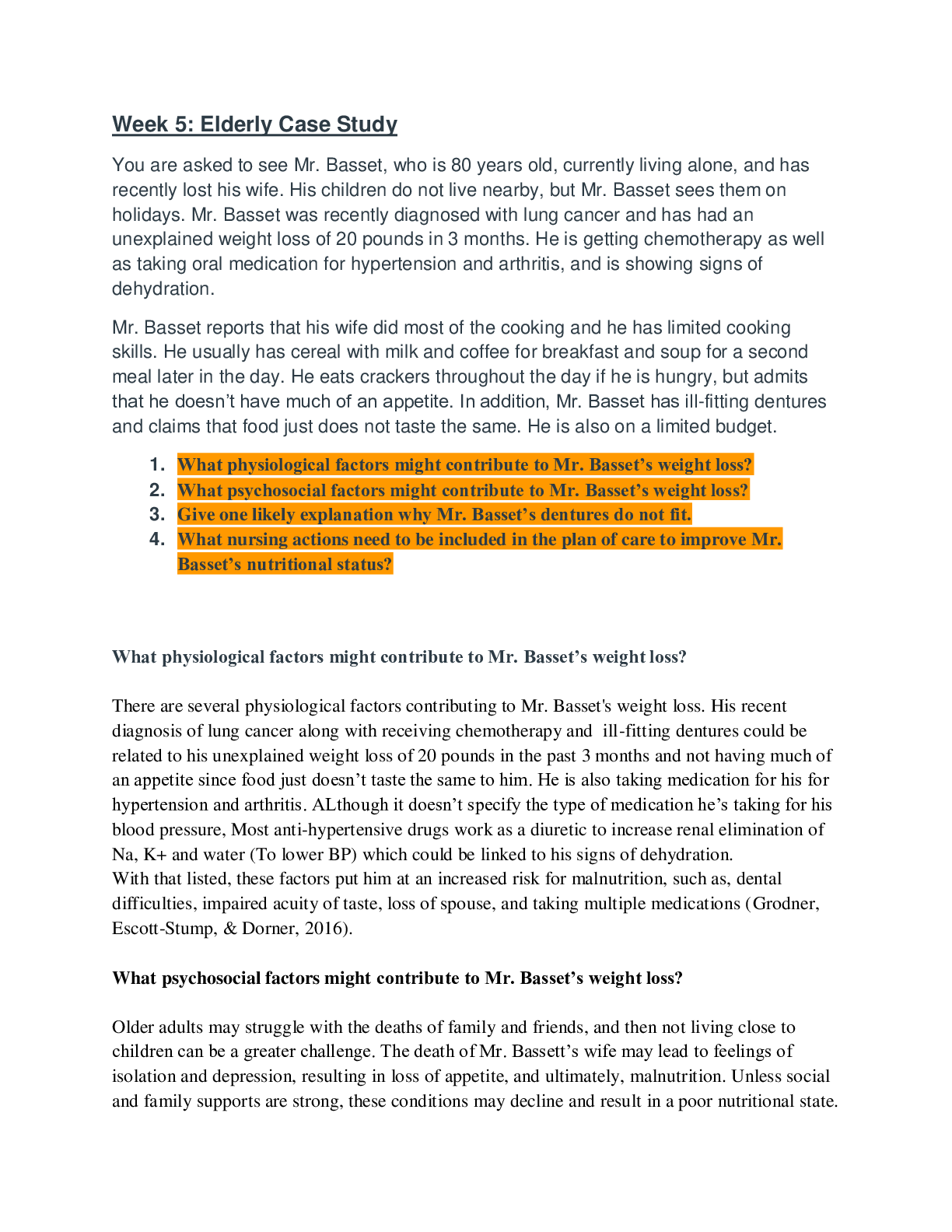*NURSING > CASE STUDY > nr 501 Week 5 discussion Theories Used By Nursing - Discussion (All)
nr 501 Week 5 discussion Theories Used By Nursing - Discussion
Document Content and Description Below
Borrowed (non-nursing) Theories Applied to the Nursing Profession (graded) While the focus of this course is nursing theory, frequently the use of non-nursing or borrowed theories occurs. Select a n... ursing practice area (i.e. education, executive, advance clinical practice, informatics, and health care policy); then identify a non-nursing (borrowed) theory; and apply it to the area you have selected. Be sure to provide an example of how the non-nursing theory can be used to enhance the selected practice area. Don’t forget to include scholarly reference(s) to support your information. Respond Tiffany Taylor 5/28/2017 10:17:14 PM Borrowed theories applied to the nursing profession Hello Dr. Rasmussen and fellow classmates. Non-nursing theories can be very similar to regular nursing theories. A lot of the non-nursing theories that I found were more psychologically based and can be applied to any nursing situation or specialty. The non-nursing theory that I most related to was behaviorism. Behaviorism has been the main approach in most psychological researches. According to Aliakbari, Parvin, Hediari, and Haqhani (2015) in the beginning of the 20th century behaviorists believed that learning is a change in a person’s behavior and it happens when there is an occurrence of two events, a stimulus and a response. So basically a person is dealing with positive or negative reinforcement in order to teach a person changes in their behavior. In the case of advanced practice nursing, I feel that the theory of behaviorism would be best utilized when teaching a patient about their health status and any interventions that need to be made to improve their overall health status. The behavioral theory also includes the practice of repetition which would benefit the patient in learning the new intervention. Whether it is medications setups, exercises, diet, and any other changes that may need to be made to their usual routine, repetition will only increase their compliance. Medications regimen is prime example of the behavior theory. When the nurse teaches the patient about their medications and any changes that have been made, they should also educate on the negative effects of non-compliance with those medications. If the patient goes home and does not take their medications as ordered and has a negative side effect, then hopefully they will learn from that situation and change their behaviors. When they are compliant with their medications, then their health status improves and this would be the positive reinforcement needed to continue their compliance. Hence, the positive and negative reinforcements and how it can change a patients behavior. References Aliakbari, F., Parvin, N., Heidari, M., & Haghani, F. (2015). Learning theories application in nursing education. Journal of Education and Health Promotion, 4, 2. http://doi.org/10.4103/2277-9531.151867 Reply Show Less Dr. Rasmussenreply to Tiffany Taylor 5/29/2017 10:15:47 AM RE: Borrowed theories applied to the nursing profession Tiffany and Class, You discussed behaviorism. Who was the author of the specific theory that applies to your post? Dr. Rasmussen Reply Show Less Catherine Cassidyreply to Dr. Rasmussen 5/31/2017 6:37:07 PM RE: Borrowed theories applied to the nursing profession Dr. Rasmussen, In my post, I discuss transformational leadership. Interestingly, in 1973, a sociologist studying the influence of political leaders, James Downton, originated the term “transformational leadership” (Spahr, 2015). Later, James McGregor Burns developed the leadership theory that describes the difference between transformational leadership and transactional leadership (Spinelli, 2006). Transformational leaders focus on working with their followers toward mutually defined goals creating an environment that is both motivating and mutually beneficial (Spinelli, 2006). The process results in both leaders and followers growing and developing, benefitting both parties as well as their institution (Spinelli, 2006). Transactional leadership is based more on a performance and reward system for successful completion of assignments aligned with the needs of the leader, with motivation more external in nature (Bromley & Kirschner- Bromley, 2007). This theory was expanded upon in 1985 by B. M. Bass describing the effectiveness of the types of different leadership styles of transformational, transactional and laissez-faire across many organizations (Bromley & Kirschner, 2007). Nursing has embraced the importance of transformational leadership, including it as a key part of shared governance within the Magnet designation by the American Nursing Credentialing Center (Lindell-Joseph & Bogue, 2016). Cathy Cassidy References Bromley, H.R., & Kirschner-Bromley, V.A. (2007). Are you a transformational leader? The Physician Executive, 33(6), 54-57. Lindell-Joseph, M., & Bogue, R.J. (2016). A theory-based approach to nursing shared governance. Nursing Outlook, 64( ), 339-351. doi: 10.1016/j.outlook.2016.01.004 Spahr, P. (2015). What is transformational leadership? How new ideas produce impressive results. Retrieved from St. Thomas University website: http://www.online.stu.edu/tranformatonal-leadership Spinelli, R.J. (2006). The applicability of Bass’s model of transformational, transactional, and laissez-faire leadership in the hospital administrative environment. Hospital Topics, 84(2), 11-18. doi: 10.3200/HTPS.84.2.11-19 Reply Show Less Tiffany Taylorreply to Dr. Rasmussen 5/31/2017 10:43:11 PM RE: Borrowed theories applied to the nursing profession Hello Dr. Rasmussen and fellow classmates. The behavior theory that I was discussing in my original post was that of Edward Thorndike. According to Ediger (2015) Edward Thorndike (1874-1949) was one of the early theorists of behaviorism. One of the ideas that Thorndike had was called law of effect. The law of effect basically stated that if a behavior results in a positive outcome then the individual is more likely to repeat that action, but if there is a negative results then the action is likely to stop. In nursing we would be able to use this when educating our patients. If we are able to show the patient the positive results of medical compliance, such as improved well-being, than hopefully the patient is more likely to continue with the regimen. In the world of psychology there are several theorists that deal with behaviorism, however I chose Thorndike because of the simplicity of his law of effect. I would consider it a building block that a nurse could use to build their care plan and interventions for when taking care of their patient. Reference EDIGER, D. M. (2015). SELECTED LEADING AMERICAN EDUCATIONAL PSYCHOLOGISTS. College Student Journal, 49(4), 527. Reply Show Less Catherine Cassidyreply to Tiffany Taylor 5/30/2017 3:24:37 PM RE: Borrowed theories applied to the nursing profession Tiffany, Thank you for you post. Behavioral science and modification is an interesting concept as it can be applied so many aspects of nursing. As you stated, it is the concept of positive or negative reinforcement leading to behavioral change with compliance increased through repetition. So many patients are challenged to make modifications to their lifestyle in order to achieve health. Education and behavior modification has to be a combined effort of many nursing disciplines. For example, it may start with the APRN in the office visit, next fall into the hands of a nurse in the acute care setting during hospitalization and be followed up by a home care nurse after discharge. Developing a way to ensure continuity of teaching and education would assist in the repetition of the education as well as repetition and reinforcement of the desired behavior. We often work in silos and finding a way to break down those silos and communicate with each other more effectively can be our own behavior modification needed to assist these patients. I believe that changing behavior and then sustaining that change is difficult for anyone, the more support one gets, the more successful one would be. Understanding and utilizing theories of behavior modification is truly important to the nursing profession. Cathy Cassidy Reply Show Less Dr. Rasmussenreply to Catherine Cassidy 6/2/2017 8:29:16 PM RE: Borrowed theories applied to the nursing profession Cathy and Class, You mentioned lifestyle modification. What instructions related to lifestyle would be priorities for the nurse to discuss with the patient? Dr. Rasmussen Reply Show Less Christine Wilsonreply to Dr. Rasmussen 6/4/2017 9:30:37 PM RE: Borrowed theories applied to the nursing profession Dr. Rasmussen and Cathy, there are many forms of behavioral modification. Starting with children, who are the easiest to mold, an APRN may suggest a schedule change for a toddler patient to their parents to increase time lengthened for napping. It would be in the hands of the parents to implement the change by reinforcing the need to lengthen nap time so the child gets enough rest. The child may fight the change in schedule but reinforcement will help solidify the change and ease into the new routine. Another change an APRN may suggest would be insulin dosing times. Patients who wake up with higher glucose levels due to eating habits and they have been told to change the habits multiple time but no change has been made could be changed to taking their insulin at night. The change in dosing will be a new behavioral change in their schedule. Another change could be the habit of biting nails in stressful situations. An APRN may suggest applying hot sauce to their nails to avoid the habit and reinforce quitting or they may suggest choosing a healthier habit such as running in stressful times. There're many behavioral changes to be made to increase health and wellness in patients. Reply Show Less Jacqueline Somervillereply to Tiffany Taylor 6/4/2017 4:15:03 PM RE: Borrowed theories applied to the nursing profession Hi Tiffany, Thank you for your post. I thought it was very interesting to read. The example of medication regimen was a great example and after reading it, I was better able to comprehend the application of behaviorism to a real life clinical scenario. Additionally, you mentioned the importance of repetition when learning something new. I am also a huge supporter of the old “see one, do one, teach one” concept many of us have heard so many times. In fact, I find myself using that same method with my children when I am teaching something to them. Even when I am at work I find it helpful to use that same concept with my patients. Just the other day I had a first time dad who didn’t know how to change a diaper, so I told him that I would let him watch me then he could call me back into the room at the next diaper change to watch and help him if he needed it the next time. After that I always tell these patients to continue to practice since there will be no shortage of diapers needing to be changed and reassure them that in no time they will be seasoned professionals. Furthermore, I also encourage them to teach their friends and family members who may be helping to care for their baby. Believe it or not there are a lot of people out there who need some education when it comes to changing a baby’s diaper. Thank you, Jacqueline Reply Show Less Dr. Rasmussenreply to Jacqueline S [Show More]
Last updated: 1 year ago
Preview 1 out of 83 pages

Buy this document to get the full access instantly
Instant Download Access after purchase
Add to cartInstant download
We Accept:

Reviews( 0 )
$9.00
Document information
Connected school, study & course
About the document
Uploaded On
Jun 30, 2022
Number of pages
83
Written in
Additional information
This document has been written for:
Uploaded
Jun 30, 2022
Downloads
0
Views
49








